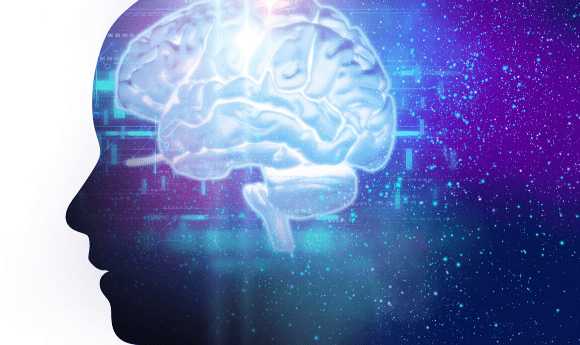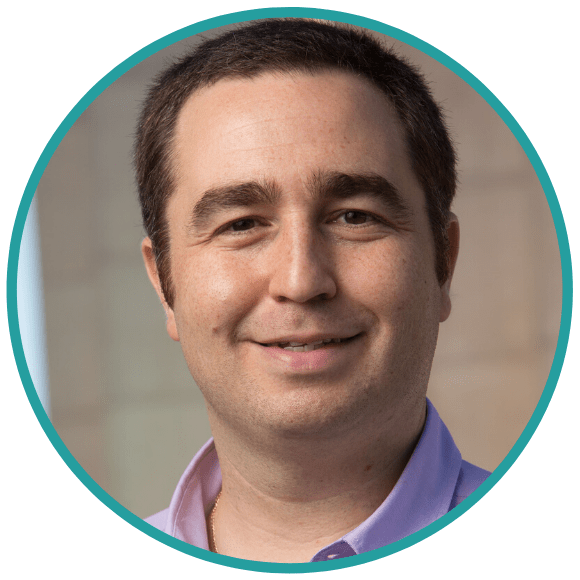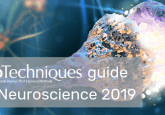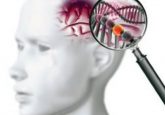Inscopix’s Jonathan Nassi and Kunal Ghosh on their cutting-edge neuroscience technology

At SfN 2019, BioTechniques caught up with Kunal Ghosh and Jonathan Nassi from Inscopix to discuss their groundbreaking neurotechnology and how this is impacting the field of neuroscience.
Could you please introduce yourself and your institution?
 Nassi: My name is Jonathan Nassi and I am a senior lead scientist with Inscopix (CA, USA). I have a PhD in Neuroscience from the University of California San Diego (CA, USA).
Nassi: My name is Jonathan Nassi and I am a senior lead scientist with Inscopix (CA, USA). I have a PhD in Neuroscience from the University of California San Diego (CA, USA).
I spent most of my academic career performing experiments attempting to link structure and function. I was mainly doing that in nonhuman primate models, which are a very important model of human brain function due to their similarity to humans in terms of brain structure, complex behaviors and higher cognitive function. As I was wrapping up my academic work, I was still really interested in how we link structure and cellular identity to function.
At the time, Inscopix attracted my attention as they were leading the way in enabling neuroscience circuit-level readouts of the brain. I joined Inscopix just over 4 years ago and, among many other things, I’ve been working to translate our technology from rodent models, where there has already been some amazing breakthroughs, into nonhuman primate models. We are really interested in impacting human health and to do that you need to have a comparative approach from rodents all the way up to primates.
I am also very involved in some of our general translational work, such as the development of preclinical model assays, circuit readouts for drug development and biotech activities.
 Ghosh: I’m Kunal Ghosh. Almost a decade ago, I was the lead student on the miniature microscope project at Stanford University (CA, USA). This project was inspired by the need to understand how the brain works and develop technology that would enable reading out large-scale neural-circuit activity in freely behaving subjects.
Ghosh: I’m Kunal Ghosh. Almost a decade ago, I was the lead student on the miniature microscope project at Stanford University (CA, USA). This project was inspired by the need to understand how the brain works and develop technology that would enable reading out large-scale neural-circuit activity in freely behaving subjects.
That work became interesting enough that there were researchers from outside of Stanford who wanted to get their hands on the technology so that they could do similar kinds of studies to understand, for example, the circuit basis of memory formation or learning. There is so little that we know about how neural circuit patterns and biological processes lead to these behaviors and brain function, and this became a promising technology that could provide a window into the brain.
That inspired us to start Inscopix. I founded Inscopix in 2011 together with my then advisors Mark Schnitzer and Abbas El Gamal (both Stanford University). Since then, the company has evolved in many ways, but the most promising change has been the impact of the science that the technology in its commercial form, nVoke and nVista, has enabled. There are now over a hundred publications with this technology, spanning many topics including understanding memories, learning and the processes in sleep.
Can you provide an example of one of these publications?
Ghosh: A recent study published in Science demonstrated which neurons are responsible for forgetting when we are dreaming. We already knew that sleep is an important process to consolidate memory and learning but we are increasingly learning that there are many more things happening while we are sleeping.
The power of this miniature microscope-based technology and the platform we are developing and commercializing is that it truly provides researchers with a window into understanding how large numbers of neurons work together to perform a specific function and, in the context of disease, how that activity gets disrupted.
I was trained as an electrical engineer so, although the technology development was inspired by a specific need in brain science, I approached this as a tech developer. I realized that this field was deprived of not only great tools to enable amazing science but complete workflows spanning sample prep, animal prep and reagents all the way through analytics.
At Inscopix we continue to strive to not only provide breakthrough technology, but also provide end-to-end workflows that get researchers data as quickly and routinely as possible and allow them to publish their amazing discoveries as quickly as possible. We are super excited to see where this science is going and we think it’s just the beginning.
Can you tell us a bit more about the platform itself and how it works?
Ghosh: The core invention was the miniature integrate microscope, or Miniscope, that myself and my collaborators at Stanford invented. We were inspired to build a head-mounted, wearable device for freely behaving subjects that would provide researchers the ability to look at large numbers of neurons with single-cell resolution.
In neuroscience, electrophysiology and electrophysiology-based tools have been a mainstay in terms of trying to record brain activity either through single cell, looking at a few cells at once or looking at average recordings to determine brain state, as we get with electroencephalography. However, these methods do not make it possible to look at the individual neural activity of a large number of cells at once.
We addressed this gap with the miniature integrated fluorescence microscope, which allowed us to look at the activity of hundreds of cells with single-cell resolution and also target specific cell types with genetically encoded fluorescent indicators. This technology differed to traditional electrophysiology-based recording technologies as now, not only can we look at the large populations of neurons with single-cell resolution, but we can also have cell-type specificity by virtue of the labeling. There is an almost perfect confluence of traits and attributes that make this technology truly enabling for mapping brain circuits.
That miniature integrated microscope is the core of the platform, but now it’s coupled with a powerful data acquisition box based on a graphics processing unit (GPU), which enables streaming of the data directly to any web browsers. It’s a network-based interface that has paved the way to a cloud future, which is important because neuroscience is entering the age of big data sets. A typical user in one of our customer labs will generate a couple of terabytes of data in an afternoon from the Inscopix platform.
We noticed that early on and have invested in building up the platform and the data acquisition in order to enable streaming directly to a web-based interface, to transfer the data to the local network and in the future do a cloud-based infrastructure for data storage analysis.
That’s a little bit on the platform itself and then of course there’s the entire workflow, which Jonathan has had significant contributions in innovating; that has helped to get the prep more turnkey. At Inscopix, we are now manufacturing our own reagents and we really incentivized this to try to provide customers collaborators with data as quickly and routinely as possible.
There is analytics on the other end, which is where a lot of the magic happens. You might get amazing data sets but what does it all mean? That is, of course, an area of continued innovation for us.
How are you making this platform accessible to users?
Nassi: We provide the full workflow solution to carrying out these kinds of experiments, including methods, analytics and the technology itself. I think that is key, because neuroscience has already moved into this generation where these kinds of circuit-level neuroscience experiments are very multidisciplinary.
Some of the big labs may already have all of the technology and expertise needed to, for example, express new genes in cells to monitor their calcium activity by causing them to be fluorescent. However, at Inscopix we are reaching well beyond those labs to, perhaps, a lab that is just studying behavior in rodents and has seen our technology and relatedexperiments and thought ‘I would love to do this, but it’s not that possible’. We are trying to reduce and take down those barriers and expand the community to allow for this kind of parallel science.
That requires streamlining the front end to make it an easy, one-step surgery and the back end to provide powerful analytics. That’s a key need that you sometimes don’t appreciate from the outside, but I think it has been one of our main motivators.
Ghosh: I totally agree. As we mature and evolve our focus is accessibility and how we can introduce this into every neuroscience lab with an interest in understanding brain function or dysfunction irrespective of their animal models. Today we are supporting animal models from mice all the way through to macaques.
I think increasingly our focus is making things turnkey, thinking about the workflow and making this platform as accessible as possible so it empowers the entire neuroscience community across the world to truly help decode the brain.
- Society for Neuroscience 2019 meeting highlights
- SfN19: The brain’s social network
- SfN19: Advances in transcriptomics provide insights into brain disease and development
You mentioned that the animals are freely behaving. How easy was that to translate up into macaques?
Nassi: In rodent models it’s completely freely behaving. Currently in macaques it’s a less restrained situation than typical macaque experiments but not as free as in the rodents. Most macaque experiments, especially those with any kind of benchtop microscope imaging platforms, are done with head fixation. It’s very challenging to align and to keep everything stable otherwise.
In macaques, we do enable head-free behavior but we still have to have some restraint because there is a cable on the microscope, so we can’t let the macaques roam free and potentially grab it. However, we are working on future innovations to overcome this.
The core platform is the same but there are some things, like the viruses that were used to express these genetically encoded calcium indicators, where work had to be done to translate this from a rodent model into a nonhuman primate model.
Other than that, the focus of the translation work is developing some of the surgical methods. The platform is so powerful as it is that we haven’t had to make many innovations that are nonhuman primate-specific. We are able to record from over 100 neurons in the premotor cortex of behaving macaque, which is an exciting start to this important work.
In this study, we were able to mount two microscopes on the head, which, given the larger size brain, means we can start to understand multi-area communication. The complex behaviors that we are looking at in the macaques are represented by circuits widely distributed across the brain, so we are excited about the fact that we are able to put multiple microscopes on the head and really understand multiple brain regions in that context.
Can you tell us more about the partnerships you’ve recently entered into, particularly the ones with Astellas and Broad?
Ghosh: With respect to Astellas (Tokyo, Japan), the overall goal here is to start to understand the neural circuits implicated in different psychiatric disorders alongside where social or behavioral deficits stem from. The objective, of course, is to facilitate a much more mechanistic process for drug development.
Today so little is known about how the brain works, let alone how it doesn’t work in the context of mental illness and brain disease, that therapeutic development in neuro is really challenging.
Most clinical trials fail because of a lack of efficacy. Our goal, as we think about translating the technology and the data into drug development applications, is to help to provide a much more predictive path to clinical trial. Our technology allows researchers at the preclinical phase to understand not only the disease phenotype at the circuit level, but also how the drugs work to restore the circuit. If they do not restore the circuit, then that indicates the drug should not be advanced.
Most preclinical models in the past have relied on behavior and the behavior has turned out to be a very poor predictor of clinical efficacy. Our overall goal is to try to provide a much more sophisticated, higher dimensional, circuit-based readout across mental illness diseases.
The Astellas collaboration is focused on understanding psychiatric disorders at the circuit level and then potentially developing circuit-based screens to advance compounds with much higher predictive value than anything else possible today.
The collaboration with the Broad Institute (MA, USA) is related to Parkinson’s. This involves both methods exploration and the identification of potential new targets. The methods side of this involves combining what we are doing to identify specific cell types and implicating it in disorders like Parkinson’s. Then, together with Broad, we will perform single-celled transcriptomics with the goal being to try to identify new druggable targets. It’s a privilege to be able to collaborate with them on this project.
Nassi: We have over 100 publications now and a lot of them are very fundamental, basic neuroscience discoveries advancing our understanding of how the brain works. More recently, though, we are seeing more publications reporting translational neuroscience discoveries that demonstrate how this kind of data could start to inform therapeutic development.
For instance, we have a really nice study out of Stanford University that involved imaging in the striatum of the mouse, which is a key area for motor behavior and is a key site in humans, as it is where we know that dysfunctions lead to a lot of the motor deficits associated with Parkinson’s.
With our Inscopix technology, they could image directly from specific pathways in a mouse model of Parkinson’s, where dysfunction is known to be linked to the disease, and for the first time be able to see and understand what’s happening in the disease. That paper found some interesting neural circuit signatures of Parkinson’s disease dysfunction, including imbalances between two important pathways.
There are things that you would not have been able to pick up with electrophysiology, but because we’re now seeing for instance, at a population level, spatiotemporal clustering of activity, we can discover interesting neural circuit signatures, both in the normal and diseased state. Once you have defined this, you can start to look at administering some compounds, such as dopamine agonists, to see if these compounds can resolve the circuit level dysfunctions.
One key thing that came out of that study was that at the behavioral level you could administer almost any compound and, at the right dose, correct the abnormal behavior that is the common readout in these models. At the circuit level, though, only L-Dopa – which is one of the most clinically efficacious drugs out there – was able to completely rectify the circuit-level dysfunctions. Of course, L-Dopa has side effects and there are lots of efforts to replace it with better drugs.
That case really highlighted the power of these circuit readouts in these kinds of disease circuit-level experiments. That’s the kind of stuff that we are looking to do in collaboration with Astellas in the context of neuropsychiatric diseases and we are very excited about that.
Our collaboration with Broad is also very much in the context of that Stanford paper on Parkinson’s. Stanford researchers found these interesting, cell-specific differential effects between these two different pathways. Then, of course, one of the questions that comes out is how can we effectively target one or both of those pathways?
There are lots of different therapeutic modalities out there; some are devices for stimulating cells and maybe one can target those specific pathways. The pharmaceutical industry is thinking about creating drugs to target specific receptors and molecules or molecular pathways.
We can now make that transition from these amazing functional datasets back to the molecular level through single-cell RNA profiling and attempt to identify specific molecular pathways that relate to the measured circuit function. This could then potentially lead to new druggable targets. It’s just the early days of doing that, but I think a lot of people are seeing the power of the single-cell functional imaging that we are providing. There have also been some amazing advances in single-cell RNA profiling, and the Macosko lab at the Broad Institute has been one of the leaders in that.
We are excited to start to look at these two datasets together and explore ways that together they can increase the value, in ways that they may not be able to individually.
Is there anything else that you have ongoing at Inscopix that you are particularly excited about?
Ghosh: I think, in closing, the only thing I will add is that as a company, we are now extremely focused on making the core platform as accessible as possible to the widest number of researchers across the world. A key part of this, of course, is making the technology easy to use and as streamlined as possible.
Another part of it is the human element because, at the end of the day, science is as much a lab-based exercise as it is a human exercise. We strongly believe that as a company we should also partner with our scientist customer collaborators and as such we have built a field scientific consulting program.
This is a team of almost 15 scientists, many of whom used Inscopix platforms when they were students themselves and have published with the platform, who are now working hand-in-hand with users across the world to make them successful. We do not charge for this service so it’s our model of team science, if you will.
We provide talented scientists from Inscopix as resources that our customers and collaborators can talk to and get help from with methods troubleshooting, experimental design or data analysis.
We believe that having someone next to you in the lab, working with you to solve those problems is a huge catalyst in our customers’ and collaborators’ success. But it also really humanizes the entire endeavor and makes the journey fun.
All of this is an investment that Inscopix is making in science. It’s our belief that this is key to making this field scientifically successful. As a society, we seem to be moving into a sharing-based economy and science is increasingly being less individual-driven and more team-driven. I think the next generation of scientists will be much more collaborative and driven more by shared goals than the desire to be the first to publish and receive all the credit for a certain study.
We want to help catalyze that movement because there are hard problems to solve and we cannot solve them individually. We need to work in teams across stakeholders, companies, academics and governments. So, it’s really fun to be able to contribute to this philosophy of team science.

